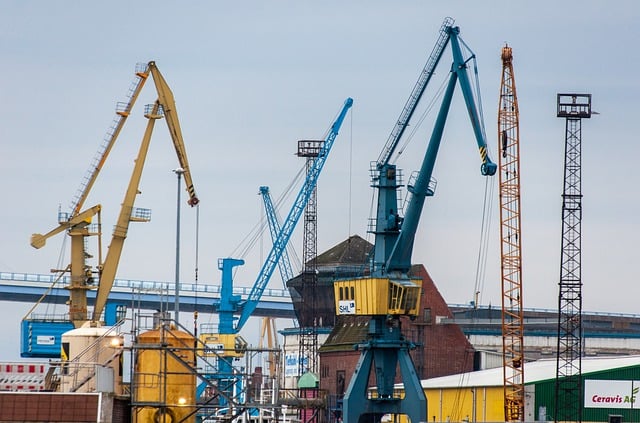In the modern industrial landscape, ensuring the reliability of equipment is crucial to maintaining smooth operations. Predictive maintenance, powered by artificial intelligence (AI) and machine learning, has revolutionized how industries monitor and manage the health of their machines. With AI for industrial equipment monitoring, manufacturers can harness the power of predictive analytics to forecast potential failures before they happen. Machine learning algorithms analyze data from sensors embedded in equipment, enabling condition-based monitoring and real-time diagnostics. This approach not only reduces unexpected downtime but also optimizes maintenance schedules and extends the lifecycle of machinery. AI in industrial IoT (Internet of Things) systems is increasingly being leveraged to automate monitoring and prevent costly repairs. This blog post delves into the importance of AI-driven predictive maintenance solutions and its impact on industrial operations.
AI for Industrial Equipment Monitoring
AI for industrial equipment monitoring is transforming how industries approach maintenance and equipment management. Traditionally, equipment was maintained based on pre-set schedules or after a failure occurred. However, with AI-driven predictive maintenance, companies can use real-time data to monitor equipment continuously. Sensors embedded within the machines collect critical information such as temperature, vibration, and pressure, sending this data to AI systems. The AI system analyzes this data, identifying patterns and abnormalities that may indicate an impending failure. By using machine learning algorithms, predictive maintenance systems can forecast issues and suggest timely repairs or adjustments before a breakdown occurs.
Implementing AI-powered equipment monitoring ensures that maintenance efforts are focused only when necessary, rather than relying on routine maintenance schedules. This precision not only saves time but also cuts costs associated with unnecessary repairs and machine downtime. Additionally, AI systems can optimize equipment utilization by identifying the most efficient operating conditions, thus improving overall production processes and reducing energy consumption.
Predictive Analytics in Maintenance
Predictive analytics plays a central role in AI-based predictive maintenance strategies. Through the use of machine learning, predictive maintenance systems are able to analyze vast amounts of historical and real-time data to make accurate predictions about future equipment failures. This data-driven approach provides businesses with actionable insights into the condition of their equipment, allowing them to take proactive measures to prevent breakdowns and increase operational efficiency.
Predictive analytics relies on historical data, sensor inputs, and advanced algorithms to detect patterns and trends. For example, a predictive maintenance system may identify that a specific machine part tends to wear out faster after a certain number of operating hours. With this knowledge, the system can forecast when that part is likely to fail and suggest a maintenance action, preventing unplanned downtime. Over time, the system learns from the collected data, continually improving the accuracy of its predictions.
Predictive maintenance algorithms can also factor in external conditions such as environmental factors or machine performance over time. This makes the system even more accurate in predicting failures and ensuring that maintenance is performed at the right time.
IoT and Predictive Maintenance
The integration of AI and the Internet of Things (IoT) is a game-changer in predictive maintenance. IoT sensors embedded within industrial equipment capture vast amounts of real-time data about the machine’s performance. This data is transmitted to AI systems, where it is analyzed to assess the condition of the equipment. IoT-enabled predictive maintenance solutions provide deeper insights into the operational health of machines, enabling businesses to reduce downtime and improve efficiency.
With IoT devices collecting and transmitting data continuously, companies can monitor machine conditions in real-time, regardless of their physical location. This remote monitoring capability allows maintenance teams to be more agile, responding to issues before they escalate into full-blown failures. Furthermore, IoT-enabled predictive maintenance systems can offer real-time notifications and alerts, ensuring that maintenance teams are immediately aware of any anomalies.
AI’s ability to process and analyze IoT data enhances the effectiveness of predictive maintenance solutions. By leveraging the vast amount of data generated by IoT devices, AI can uncover hidden patterns, optimize maintenance schedules, and suggest performance improvements for equipment.
Smart Maintenance with AI
Smart maintenance refers to using AI-driven solutions to optimize the way maintenance tasks are planned and executed. Traditional maintenance strategies are based on time-based intervals or reactive measures, often leading to inefficiencies and high operational costs. Smart maintenance powered by AI takes a more data-driven and intelligent approach by utilizing real-time equipment data and predictive models to determine when and how maintenance should be performed.
AI-based smart maintenance systems monitor equipment performance, detect anomalies, and make maintenance recommendations in real-time. For example, if a machine’s vibration levels exceed a certain threshold, AI systems can trigger an alert to inform maintenance teams of a potential issue. This proactive approach ensures that maintenance is only performed when it’s needed, reducing unnecessary work and extending the lifespan of equipment.
Smart maintenance systems can also help streamline workflows by integrating with other business processes such as inventory management and scheduling. This ensures that necessary parts and resources are available when needed, minimizing downtime and improving overall operational efficiency.
Cost Savings with Predictive Maintenance AI
One of the most significant benefits of using AI for predictive maintenance is the potential for cost savings. Traditional maintenance strategies, such as time-based or reactive maintenance, can lead to high operational costs, especially when unexpected failures occur. However, predictive maintenance with AI helps businesses optimize their maintenance efforts, reducing unnecessary repairs and downtime.
By predicting equipment failures before they happen, AI-driven predictive maintenance systems allow businesses to schedule repairs or replacements at the most cost-effective time. This approach reduces the need for emergency repairs, which are often more expensive due to the urgent nature of the work. Additionally, by identifying small issues before they turn into larger problems, AI-powered systems can help prevent costly breakdowns and avoid the need for extensive repairs.
Predictive maintenance also enables companies to extend the lifespan of their equipment. By performing maintenance only when necessary, companies can ensure that equipment is running efficiently and at peak performance for longer periods, delaying costly replacements and maximizing their return on investment.
Reducing Downtime with Predictive Maintenance AI
Unplanned downtime is one of the most significant challenges faced by industries today, resulting in lost productivity, increased costs, and even customer dissatisfaction. Predictive maintenance with AI helps reduce downtime by forecasting equipment failures and enabling timely interventions before breakdowns occur.
AI-driven systems use real-time data from sensors to monitor equipment health continuously. If the system detects any signs of wear or abnormal conditions, it can alert maintenance teams to take action before the issue leads to a failure. By identifying potential problems early on, companies can avoid the significant losses associated with unplanned downtime.
In addition to reducing downtime, AI-based predictive maintenance can also enhance the efficiency of maintenance operations. Maintenance teams can plan and prioritize tasks more effectively, ensuring that they address the most critical issues first and avoid unnecessary maintenance on functioning equipment.
Conclusion
Incorporating AI in predictive maintenance for industrial equipment is a game-changer for businesses looking to optimize their operations, reduce costs, and improve equipment longevity. With real-time monitoring, predictive analytics, and IoT integration, AI-driven solutions offer numerous benefits, including cost savings, reduced downtime, and smarter maintenance scheduling. By leveraging the power of AI, industries can stay ahead of potential issues, ensuring equipment runs smoothly and efficiently while maximizing return on investment. Predictive maintenance is not just the future of industrial equipment management; it’s the present, and adopting it will position businesses for long-term success.






